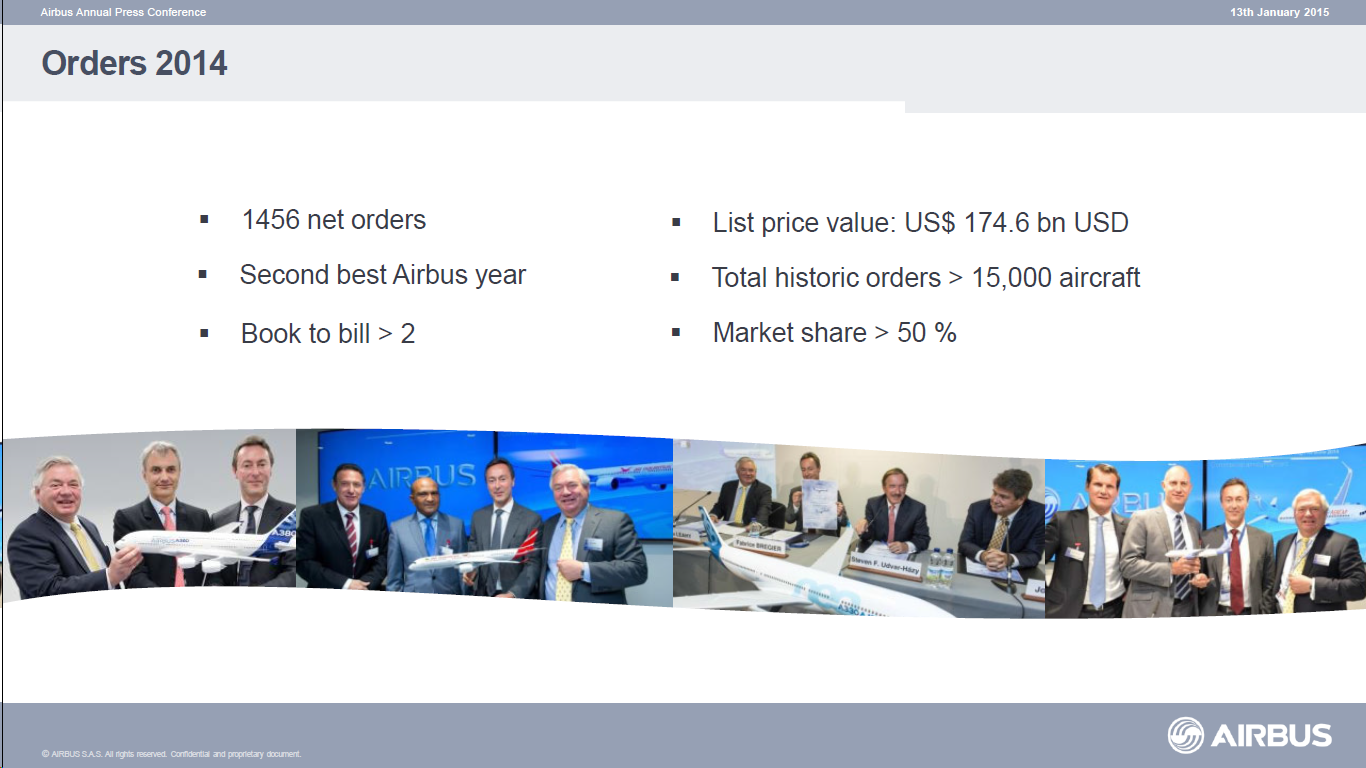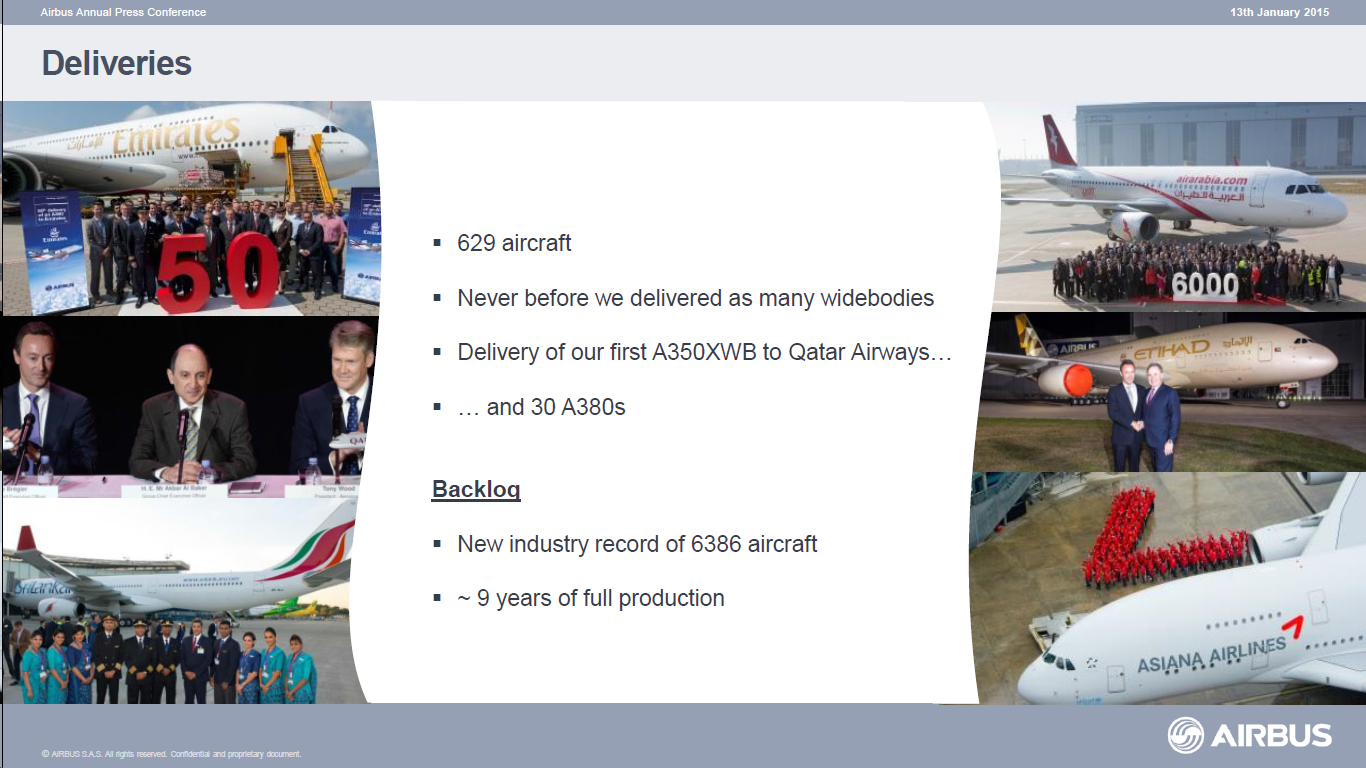Leeham News and Analysis
There's more to real news than a news release.
Redefining the 757 replacement: Requirement for the 225/5000 Sector, Part 2.
By Bjorn Fehrm
Subscription required
Introduction
01 March 2015, c. Leeham Co: In the first part of the article series around the need for a more capable solution for 180-240 seats and 5,000 nautical miles, we went through the derivative aircraft that Boeing could field as competitors to Airbus A321LR and showed why none of them are effective. We also established the market requirements and the likely market size for aircraft that shall cover this segment and the required efficiency and overall cost improvement needed.
We will now look at different solutions to the requirements, first by analyzing what key characteristics does single and dual aisle aircraft have and what consequences will they have for the aircraft’s efficiency parameters like weight, size and drag. Once we have these characteristics we can design adapted aircraft types and calculate their economics such as fuel costs and other costs and we can also establish their operational ground handling times and thereby the consequences single or dual aisle will have on the aircraft utilization.
Having developed and presented these facts it will be possible to forecast what will be the most likely results of Boeing’s New Airplane Study, NAS that we presented 2 November last year. Boeing now uses the name, Middle of the Market (MOM) in place of the NAS.
Summary:
Our second article shows:
- Drag and weight per seat for today’s short and mid-range aircraft vary significantly between single and dual aisle aircraft
- There is a strong correlation between aircraft wetted area and aircraft weight.
- Dual aisle designs in the 180-240 seat segment will have to be highly optimized to be able to compete with single aisle, if at all.
Playing number games with the A380
Feb. 15, 2015: Orders for the Airbus A380 have been slow, almost glacial, since the program was launched in 2000. Despite a 20-year forecast then and every year since by Airbus that suggests there is a need for 1,200-1,700 Very Large Aircraft (including freighters), sales of the A380 and Boeing’s 747-400/8 have never reached a point that support the forecast.
Airbus’ latest forecast now is for around 1,500 VLAs, including freighters.
Slow sales hang over the prospect of developing an A380neo. We concluded last year that Airbus had to proceed with the neo in order to spur sales. The commercial viability is a matter of great debate, but Airbus Commercial CEO Fabrice Bregier said last month Airbus will produce a neo, and even stretch the airplane.
Aviation consultant Richard Aboulafia, a critic of the A380 from the get-go, thinks Airbus would be nuts to launch a neo. At the Pacific Northwest Aerospace Alliance conference last week in Lynnwood (WA), in the heart of Boeing country, Aboulafia renewed his decades-long criticism of the airplane.
Boeing 757 MAX: why its operating economics does not work
By Bjorn Fehrm
Introduction
Feb 12, 2015: In a series of articles during the autumn we covered the replacement scenarios for Boeing’s 757-200 when used for long haul passenger operations. The series also included an interview with Boeing’s head of new airplane studies, Kourosh Hadi, director of product development at Boeing where he outlined what Boeing studied and why.
This week The Wall Street Journal published an article portraying that Boeing seriously considered launching a re-engined 757 as a response to Airbus A321LR. Boeing has since vehemently denied the story and we have given the reasons why it does not make sense for Boeing.
As a complement we show the operational economical analysis that we did at the time of our 757 articles, now updated to the exact modifications suggested by The WSJ, a new engine and new winglets paired with modern avionics.
Exclusive: Emirates Airlines gets pitch for 100 Boeing 747-8s
- Update, 3:30pm PST: For those who may not be adept at reading literally what was written, we did not say Boeing made the pitch.
Feb. 4, 2015: In a pitch designed to save the Boeing 747-8 and simultaneously kill the prospect of an Airbus A380neo, Emirates Airlines has received a pitch for 100 of the slow-selling Boeing, two sources familiar with the situation tell Leeham News and Comment (LNC). This is isn’t yet a formal proposal, as far as we know.
Tim Clark, president of Emirates, said he would buy 100 A380s if Airbus re-engined and launched the neo. The neo would use the new Rolls-Royce Advance engine, according to two different sources. Neither Pratt & Whitney nor GE Aviation, which dominate the current A380 engine market share with its joint venture Engine Alliance GP7200, are interested in developing a new engine for the prospective A380neo, according to public statements by both companies. PW doesn’t offer an engine alone that could be adapted to the size required for the A380neo. GE’s GEnx engine, used on the Boeing 787, is in the thrust and size bracket but would only improve the efficiency with 4-5%, thus not worth the change effort. The smaller version of the GEnx is on the 747-8. Read more
Airbus A400M; how good and how late?
Subscription required
By Bjorn Fehrm
Introduction
01 Feb 2015: Six years ago Tom Enders, then-CEO for Airbus (when the parent was named EADS), threatened to stop the A400M project. He then played hardball to get eight European states to understand they had to pay 5bn Euro more or get no plane. Airbus existence could be threatened by a project that its management when the program was launch (CEO Jean Pierson) did not want but that the politicians convinced Pierson’s successor, Noel Forgeard, to do.
Now Tom Enders is CEO of Airbus Group and has to apologize to the same governments that he struck a deal with then to finish the project if Airbus got the money and a consent to three years of delays. Now Airbus can no longer fulfill the terms and the airplane is still falling short of performance specifications. Deliveries have been delayed further and promised capabilities will be delivered later than said. Like then, heads are rolling at Airbus and tighter control is being applied.
Summary
- The A400M rests between the Lockheed Martin C-130 and the Boeing C-17.
- European countries need an airlifter for military and humanitarian missions.
- Dirt airstrip capability is needed.
- The program will take longer to complete and this time Airbus has to pay.
Rolls-Royce and the leasing market
By Bjorn Fehrm
22 Jan. 2015: When talking to leasing companies at the annual Growth Frontiers 2015 conference in Dublin, Rolls-Royce is the engine manufacturer that is perceived as the least desirable on their airplanes.
This has no reliability or performance background, Rolls-Royce has a good reputation for producing solid and reliable engines which serves their operators well. It is rather the success of Rolls-Royce’s after market program, TotalCare, which is the at the root of the Leasing companies problems with Rolls-Royce.
Airbus reveals record orders at annual press conference
By Bjorn Fehrm
Toulouse 13 Jan 2015: Airbus today held their annual press conference where they among other things revealed their final numbers for orders and deliveries. The press conference was hosted by Airbus CEO Fabrice Bregier accompanied by COO Customers John Leahy, new COO Tom Williams and new Head of Programs Didier Evrard.
Airbus in 2014
Bregier started with pointing out that 2014 was a very eventful year for Airbus. Airbus did their customary end of year sprint and passed Boeing for net orders with 24 aircraft netting 1456 commands, Figure 1.
On the delivery side Boeing is ahead with 723 deliveries versus Airbus 629, Figure 2.
Further Airbus certified the A350 and delivered the first aircraft to its launch customer, Qatar Airways. It also launched the A330neo and got 120 orders during the year. Finally they flew the A320neo first prototype.
A380neo decision likely this year, triggering the next widebody engine project
Subscription required
By Bjorn Fehrm
Introduction
Jan. 12, 2015: One of the subjects which is sure to come up on Airbus annual press conference on Tuesday the 13th in Toulouse will be when and how Airbus will re-engine the A380.
Airbus Commercial CEO Fabrice Bregier vowed during the Airbus Group Global Investors Day last month that an A380neo is coming.
There is much speculation around this subject as the business case of re-engineering an aircraft that is selling at such low numbers is difficult to get to close. The business case is difficult to make work for Airbus  (such a project will cost in the order of $2 billion) but it will be equally hard for the engine manufacturers to offer engines that have enough efficiency gain to make the overall project feasible from an efficiency improvement perspective.
(such a project will cost in the order of $2 billion) but it will be equally hard for the engine manufacturers to offer engines that have enough efficiency gain to make the overall project feasible from an efficiency improvement perspective.
Summary
- A380 Classic equals Boeing 777-300ER seat fuel costs.
- Boeing 777-9 beats A380 on CASM, an A380neo regains the advantage.
- Engine makers face hard choices to retain dominance or to broaden market penetration.




